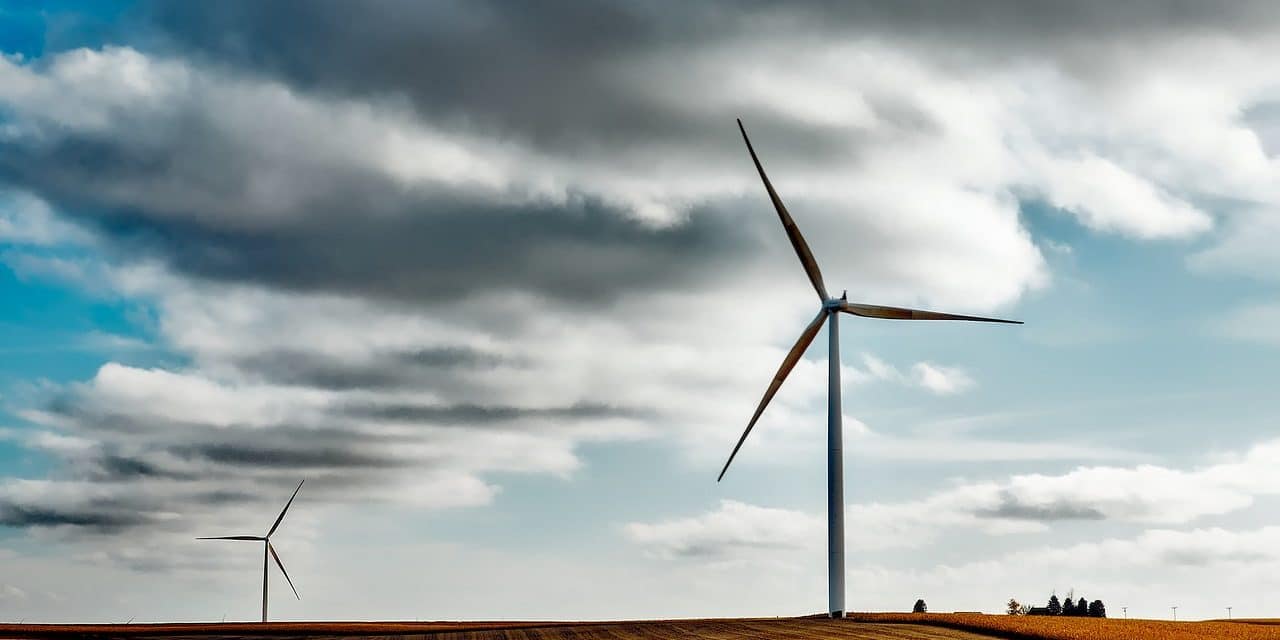Take a look at all the lights, appliances, and devices around you. Now imagine knowing that every ounce of electricity powering those devices came from 100% renewable energy sources. A few decades ago, that may have sounded more like a dream than a realistic possibility. But times have changed, and it’s possible to purchase green energy for your home in almost every U.S. state. Read on to learn everything you need to know about how to buy green energy to power your eco-friendly abode!
What is Green Energy?
Green energy is just another way to say renewable energy — energy produced from natural and renewable resources like wind, sun, biomass, and moving water. As non-renewable resources (like coal and natural gas) become more scarce, green energy is quickly moving in to fill the gaps. Nations all across the globe are setting renewable energy goals to help minimize the harmful effects of electricity production. The United States, for example, plans to generate 30% of its electricity from renewable resources by 2025. And some European countries have already hit their 2020 renewable energy targets!
Types of Green Energy:
- Solar: Solar panels convert the sun’s powerful rays to generate electricity. According to Energy Sage, “Solar photovoltaic systems are a well-proven technology first invented in 1954 by scientists at Bell Labs. Today, solar panels are installed on over one million homes in the U.S.”
- Wind: Wind power harnesses the wind to turn turbines that generate electricity. Wind energy has been in use since 2,000 B.C. and it’s the fastest growing form of energy production in the world.
- Hydroelectric: Hydroelectric power, or hydropower, is the most commonly-used source of renewable energy, representing 25% of renewable energy in the U.S. and about 16% worldwide. Hydroelectric generators capture the energy from flowing water, which spins a hydraulic turbine to create mechanical energy. This energy is converted into electricity by a hydroelectric generator.
- Geothermal: Geothermal energy harnesses heat from inside the Earth to generate electricity (and to naturally heat and cool homes). Geothermal power plants generate electricity using wells drilled deep into underground reservoirs. Some geothermal plants use the steam from a reservoir to power a turbine; others use the hot water to boil a special fluid that turns a turbine as it vaporizes.
- Bioenergy: Bioenergy makes use of the energy already contained in natural and organic biological compounds, known as biomass. Plants, trees, animal waste, and algae are just a few examples of biomass materials used to create bioenergy. These materials are either directly combusted to generate electricity or refined into biofuel. You’ve probably heard of biofuel being used to power automobiles, but scientists are developing more efficient methods of utilizing biofuels as a means to produce electricity, as well.
What Are My Green Energy Options?
Regardless of where energy is produced, whether at a coal-burning plant or solar farm, all of the electricity mixes together on its journey to the electric power grid. There’s no way to distinguish between kWhs from renewable energy sources and kWhs generated using fossil fuels. So how can a consumer like you know that the power you’re using is coming from renewable resources? There’s no way to channel the electricity from a wind farm directly to your home, but that doesn’t mean you can’t purchase green energy! You can fund renewable energy projects in a few different ways, including green pricing, green marketing, and renewable energy credits.
- Green Pricing
- According to the U.S. Department of Energy, green pricing is an optional service that allows customers an opportunity to support electricity company investments in renewable energy technologies. To participate in Green Pricing, you won’t need to switch utility companies — you’ll simply pay a small premium price on top of your current electricity bill to cover the cost and support renewable energy production. And in most cases, this premium is only a cent or two per kWh. Contact your local energy providers to see what green pricing options are available in your area.
- Green Marketing
- Though it’s less common, some states do offer the option to switch electricity providers to a green power supply company, much like you can switch cell phone network providers. Selling individualized green power in competitive markets is known as green marketing. Contact your local energy providers to see if green marketing is available in your state.
- Renewable Energy Certificates (REC)
- Renewable Energy Certificates, also known as renewable energy credits, enable customers to purchase renewable power and help the renewable energy market grow. Each REC represents a specific amount of power produced and delivered to the power grid by a renewable energy source. Take a wind turbine for example: for every megawatt hour of electricity, the turbine produces, the turbine’s owner generates a REC that they can either keep or sell. When you purchase a REC, you can make the claim that the renewable energy accounted for by your REC was responsible for powering your home, meaning that amount of your home’s electricity use was completely sustainable.
- It’s RECs that allow the green energy industry to function on a very large scale, since businesses and large factory owners often purchase RECs to fulfill national sustainable energy standards. RECs provide a green energy option for people in any state, but are ideal for people who live in states where green pricing and green marketing options are not available.
- Community Renewable Energy Development
- Community renewable energy development programs provide another great way of getting access to green power. These programs allow customers to purchase a share of a renewable energy system developed in the local community, like a large solar panel array, and reap the benefits of the energy produced by their share. Typically, community renewable energy programs are based on either solar or wind energy.
- One example of this green energy purchasing method: the Holy Cross Energy solar project in El Jebel, CO. The El Jebel community solar array is supported by 18 community participants; each member purchases shares at an upfront cost of $3.15 per watt ($3,150 per kW), then receives a $0.11/kWh credit on each monthly electricity bill.
- More than 90 shared solar projects similar to the El Jebel project exist around the country. Visit the Solar Energy Industries Association to learn more about shared renewable energy projects.
Ready to Get Started?
Visit BuyCleanEnergy.org about the green energy purchase options in your state. Simply enter your zip code to learn about the many green energy options that are available to you.





![10 Steps Toward a Zero Energy Home [Infographic]](https://elemental.green/wp-content/uploads/2016/04/cbfb-440x264.jpg)


